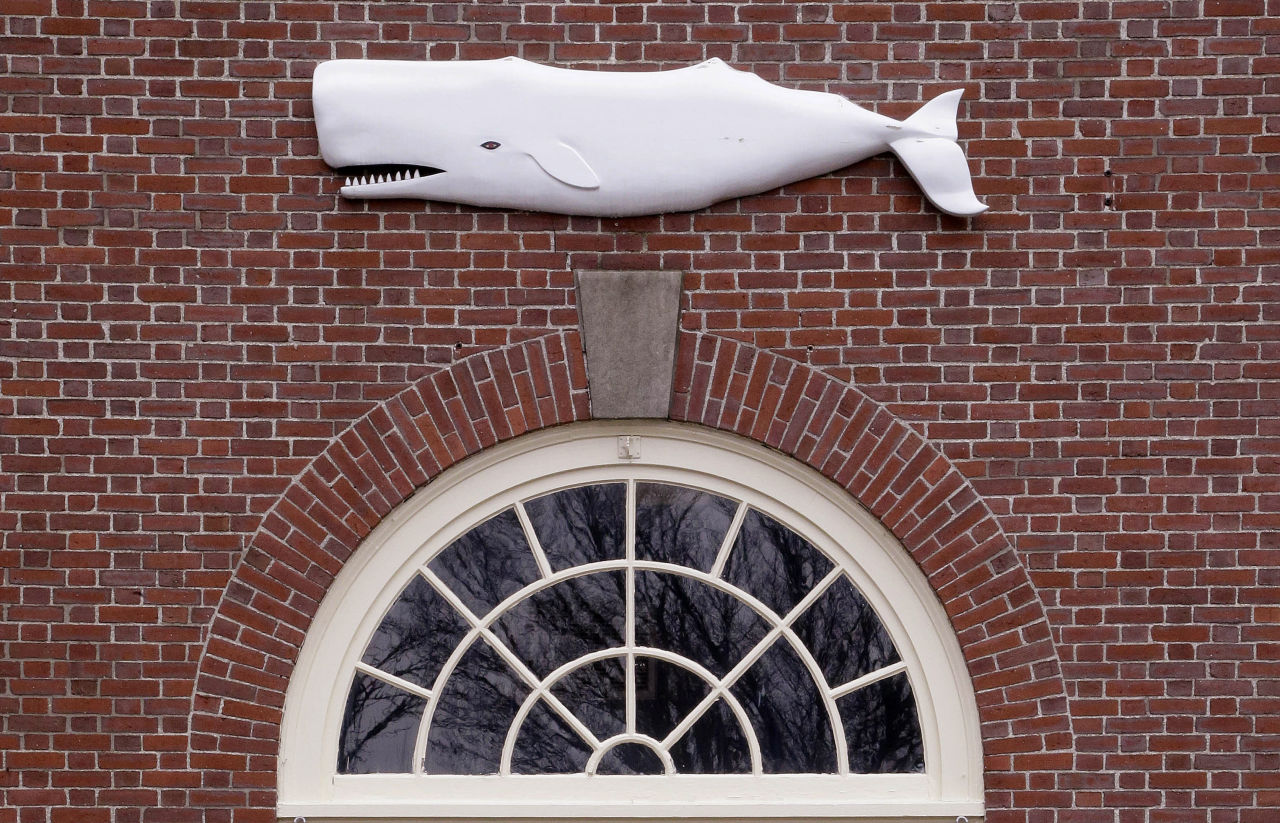Advertisement
'Moby-Dick' Comes Alive In New Bedford Reading
Resume
It was from the Port of New Bedford in 1841 where a 21-year-old Herman Melville set out on the whale ship Acushnet.
His 18-month voyage would inspire the tale of Ishmael, Captain Ahab and the white whale, and this weekend, hundreds gathered at the New Bedford Whaling Museum to read "Moby-Dick" from the beginning to the tail end.
"Call me Ishmael,” read Nathaniel Philbrick, delivering the opening salvo of the mighty American novel.
Hundreds turned the pages of "Moby-Dick" -- others swiped their tablets — reading along as Philbrick narrated Ishmael’s desire to set out to sea.

Some years ago—never mind how long precisely—having little or no money in my purse, and nothing particular to interest me on shore, I thought I would sail about a little and see the watery part of the world.... If they but knew it, almost all men in their degree, some time or other, cherish very nearly the same feelings towards the ocean with me.
It was the start of the 20th annual Moby-Dick Marathon, and over the next 25 hours, readers from all over America and beyond read 10-minute sections of the book. Some stayed for the opening, others came at the end, and an elite few stayed through the entire reading.
“This is the place where Melville left from," said Philip Hoare after reading his part.
Hoare himself writes prize-winning books about whales. He came from his home in Southampton, England -- a port city he compares to New Bedford -- to participate in the reading here. Hoare sees the past when he visits the Whaling City.
“In the hotel this morning we were speaking to one of the fishermen ... and just like Melville, he'd come in [and] he [couldn't] get a boat until Monday morning," Hoare said. "So he's just like Melville going to the Spouter Inn."
"It's this sense of history," Hoare added, "it's just here, it’s just implicit in the place."
That history comes alive in the book that Hoare said is almost like a Bible.
“It has kind of a meaning for everything," the author said. "It speaks to ecological threat, the notion of whales going extinct; it speaks to notions of man’s evil and the kinds of things that we've done to nature and do to other people; it speaks to the notions of slavery of Melville's time but of course the slavery of our time."

The reading started in front of the Lagoda, a massive mock whale ship inside the museum. An array of harpoons and other whaling artifacts lined the walls, setting the scene as Ishmael’s voyage began in New Bedford.
Mayor Jon Mitchell, who was just sworn in to his third term, read the passage where Melville describes New Bedford:
The town itself is perhaps the dearest place to live in, in all New England. It is a land of oil...
Go and gaze upon the iron emblematical harpoons round yonder lofty mansion, and your question will be answered. Yes; all these brave houses and flowery gardens came from the Atlantic, Pacific, and Indian oceans. One and all, they were harpooned and dragged up hither from the bottom of the sea.
An hour and a half in, the Melvillian mob headed out of the Whaling Museum and across the street to The Seamen’s Bethel. Melville visited this small temple during his stay in New Bedford. On the walls are tablets, engraved with the names of sailors who left New Bedford, never to return. Those very tablets appear in a section of "Moby-Dick" titled “The Whaleman's Chapel."
The chaplain had not yet arrived; and there these silent islands of men and women sat steadfastly eyeing several marble tablets, with black borders, masoned into the wall on either side the pulpit. Three of them ran something like the following, but I do not pretend to quote:
Sacred To the Memory of
JOHN TALBOT,
Who, at the age of eighteen, was lost overboard
In all, 168 readers would recite "Moby-Dick," from “Call me Ishmael” to the bitter wreckage of Ahab’s ship. There were readings in Hebrew, Dutch, French, Spanish, Japanese, Mandarin — and a separate reading of an abridged Portuguese version.
One of the few who made it start to finish was Casey Dunn of Providence.
“I’m a marine biologist, and it’s an amazing snapshot of what people did and didn't know about the ocean 150 years ago, and it’s just a great reminder of how little we still know," Dunn said.
Dunn says he has a very different sense of the book now that he's ingested it in one sitting.
"There’s little pieces of the book that stuck with me when I’ve read it before, and … you don’t have a sense of where these things are in the progress of the book afterwards," Dunn said. "But to hear the whole thing end to end, it’s really amazing."
Dana Westover read the end of the last chapter of "Moby-Dick":
"Now small fowls flew screaming over the yet yawning gulf; a sullen white surf beat against its steep sides; then all collapsed; and the great shroud of the sea rolled on as it rolled 5,000 years ago."
Correction: This post has been updated to reflect the original style of "Moby-Dick," with a hyphen.
This article was originally published on January 12, 2016.
